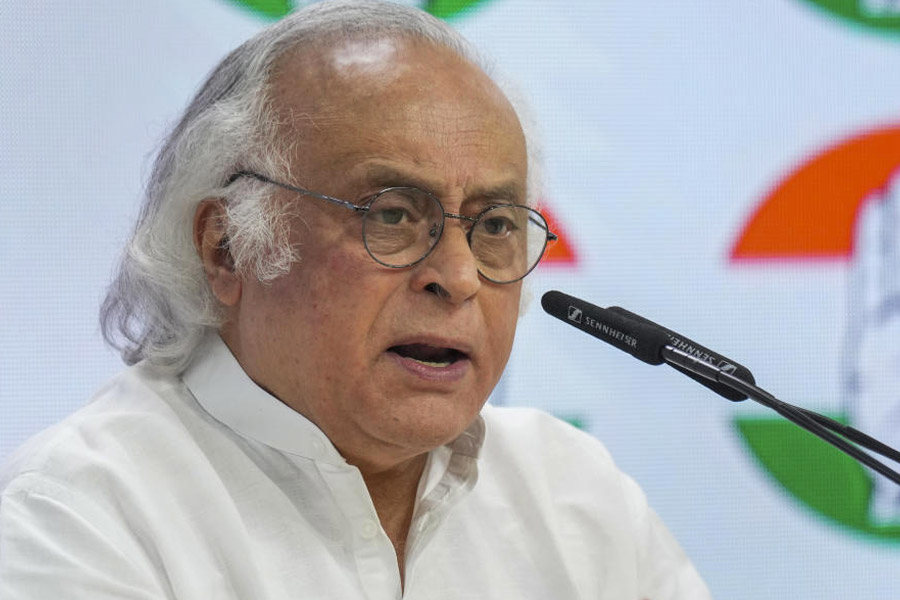 |
| A fruit vendor with her cart full of bananas (Reuters) |
 |
| A few of the various avatars of the banana used in Bengal — mocha, thor and kachkola. Picture by Rashbehari Das |
Come, Mister Tally man,
Tally me banana
Daylight come,
And me wanna go home
So sang West Indian singer Harry Belafonte in his worldwide hit, Banana Boat Song, about farmers bringing their produce to market, a produce that was once the most important export for some of these islands in the sun.
Indeed, if one has to think of a single fruit that proliferates in every tropical country under the sun, it has to be the banana. It is a sturdy plant and the fruit comes in many varieties, from the commonplace to the exotic. It can be used as a fruit when ripe or as a vegetable when unripe and in some cases it even acts as the staple food during a meal.
In Uganda, where the green banana is called matoke (pronounced ma-toh-kay) it is often simply boiled and seasoned and used as a staple food. It is a very important food there and you will see women clad in the brightest colours walking with a statuesque gait bearing enormous quantities of the fruit on their heads, on the way to market.
Another recipe that comes to mind is one in which onions and garlic are saut?ed in oil; mushrooms, tomatoes, a kind of black bean and matoke are added and stir fried for a while and then water and seasoning are added and this cooks together till the gravy thickens a little to produce a delicious stew which is then eaten with posho, a highly starchy cereal made from maize and similar to polenta.
The posho is cooked to a consistency so thick that if you invert the vessel in which it is cooked, the whole body of posho will come out in the shape of the vessel. Mouthful-sized amounts of posho are scooped up and shaped in the hands into balls. Then, a depression is made with the thumb so that the posho becomes like a spoon; this is dipped into the matoke stew and a divine mouthful is ready for the taking.
In western cuisine, the banana is usually used for desserts and salads and so on in its ripe form. Banana Fritters, fruit salads with cream, chopped bananas with your morning cereal, and many other mouth-watering possibilities exist.
However, if in any part of the world true justice is done to the banana plant and all the amazing things it has to offer, it is arguably Bengal. This single tree gives us more than any other and we will go to great lengths to utilise every part of it, eating the fruit, the pith (thor), the flower ? actually an inflorescence (mocha) ? and even the gero ? the extension of the pith which becomes visible and at the end of which is borne the blossom.
There is mocha and there is garbo mocha. The first is more commonly available, is smaller and is taken from the tree after the bananas have been formed.
The second is rare, larger and more expensive and is cut before the fruit has matured. It is also tastier. To prepare this item for cooking is an elaborate affair. The layers of flaps, which encase the inflorescence, have to be removed one by one. The stick-like immature bananas have to be removed and from each individual one, the stylus has to be cut and discarded. What is kept has to be finely chopped and soaked in water. When the entire edible portions have been thus collected and the water drained, fresh water is taken and the mocha is boiled for 15 minutes. Only now it is ready for cooking.
Mochar Ghonto, a dry, spicy preparation of mocha, is the most common preparation and usually is made with chickpeas, grated coconut, sometimes boris and even shrimps. Mochar Chop is a celebrated snack and is a favourite item of Bengal’s chop-cutlet culture.
Preparing the thor or banana pith for cooking is not as elaborate but is still tedious and time-consuming. This delicacy can also be made into a ghonto, it can be curried, it is an ingredient in our famous shukto and when cooked with sweet pumpkin makes a delicious dish. It is also cooked with shrimp, but my favourite is Thorer Bharta, a Tripura preparation in which lots of chillies, dried fish, shrimps, thor and other ingredients are mashed up together. The juice of thor is said to be good for anaemia and thor is also good for constipation. Plantago Major, an extract of the banana plant, is used in homeopathy.
And of course there is kanchkola, the green bananas, which we use in many dishes, from shukto to fish curries to making cutlets out of them. When cooked with Magur fish (a scaleless freshwater catfish bought live), it is excellent for a tender stomach.
As for the fruit, the sweet and succulent martamam kola comes first. Then there is singapori, rampali, kathali, champa, biche (full of seeds) and more. The tree as a whole is a part of the very fibre of our lives.
No auspicious occasion or puja can take place without the banana plant and when Ma Durga realised that Lord Ganesh would never find a wife, she gave him in marriage to a banana tree, who is known as kola bou.
Footnote: The season for good mocha and thor (end of August) is just around the corner.










